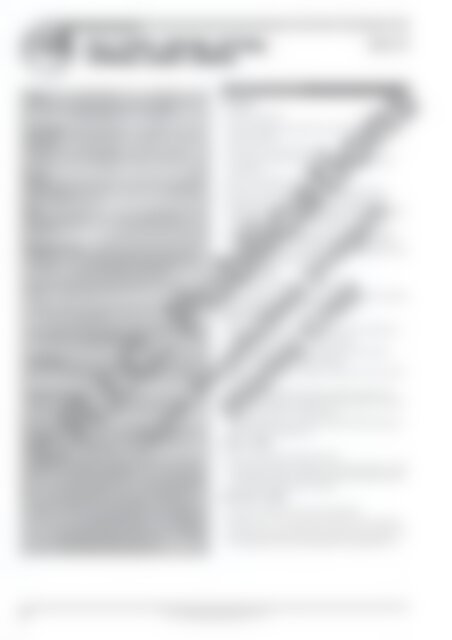RIC-20800_Teaching_Strategies_for_Writing_BkD_punctuation
You also want an ePaper? Increase the reach of your titles
YUMPU automatically turns print PDFs into web optimized ePapers that Google loves.
TEACHER INFORMATION<br />
FULL STOPS, CAPITAL LETTERS,<br />
COMMAS, DIRECT SPEECH<br />
UNIT 10<br />
Focus<br />
Punctuation – full stops, capitals, commas, direct speech<br />
Progression<br />
Recognise<br />
Students will recognise specified <strong>punctuation</strong> from modelled<br />
examples.<br />
Choose<br />
Students will choose appropriate <strong>punctuation</strong> <strong>for</strong> sentences, with<br />
teacher support.<br />
Use<br />
Students will correctly punctuate supplied and self-written<br />
sentences.<br />
Definition of terms<br />
A sentence is a set of words that makes sense by itself. It may be<br />
a statement, a question, an exclamation or a command.<br />
Quotation marks are used to set off the actual words said or<br />
thought.<br />
A clause is a group of words that contains a verb and a subject;<br />
e.g. He (subject) walks (verb).<br />
A main clause is one which stands as a simple sentence in its own<br />
right; e.g. If it rains, you will get soaking wet.<br />
Introduction<br />
Good writers improve their writing by using correct <strong>punctuation</strong>.<br />
Teacher in<strong>for</strong>mation<br />
Punctuation enables a writer to more fully and accurately<br />
communicate with the reader.<br />
Note: There is more than one method of punctuating direct speech.<br />
(Two different methods are given in the Answers.) Whichever<br />
method is chosen, it must be consistently used.<br />
A comma is used be<strong>for</strong>e the coordinating conjunction (the Ox<strong>for</strong>d<br />
comma or serial comma) in some publications. It is not incorrect<br />
to use it this way, but it is more common to not include the comma;<br />
e.g. I bought potatoes, tomatoes, beans and sprouts, rather than<br />
I bought potatoes, tomatoes, beans, and sprouts. However, it is<br />
acceptable in cases where there may be ambiguity or a need <strong>for</strong><br />
clarification; e.g. I dedicate this book to Mum and Dad, Kate Mara<br />
and Iron Man. Since it is unlikely the writer really means ‘Mum and<br />
Dad’ are Kate Mara and Iron Man, it can be rewritten as I dedicate<br />
this book to Mum and Dad, Kate Mara, and Iron Man.<br />
LESSON NOTES AND PLANS<br />
Introduction<br />
• Discuss the text title.<br />
• Elicit from students the pets they have and list these on the board.<br />
Make a class tally.<br />
• Read the text with or to the class.<br />
• Ask students to identify the text type and discuss the features of<br />
narrative text.<br />
• Discuss the <strong>punctuation</strong> used.<br />
• Discuss how difficult it would be to read without <strong>punctuation</strong>.<br />
• Note that there is more than one method of punctuating direct<br />
speech. (Two different methods are given in the Answers.) Whatever<br />
method is chosen, it must be consistently used.<br />
• Explain to students that they will see a comma used be<strong>for</strong>e the<br />
coordinating conjunction (the Ox<strong>for</strong>d comma or serial comma) in<br />
some publications. It is not incorrect to use it this way, but it is more<br />
common to not include the comma.<br />
Full stops – Page 66<br />
• Read and discuss the definition of full stops.<br />
• Work with those requiring additional assistance while the remainder<br />
of the class work independently on the activities.<br />
Capital letters – Page 67<br />
• Read and discuss the in<strong>for</strong>mation about the use of capital letters.<br />
• Revise the definition of a sentence with students.<br />
• Read with the class the statement about proper nouns. Ask <strong>for</strong><br />
further examples and list them on the board.<br />
• Emphasise that a capital is needed <strong>for</strong> names; hence ‘my uncle’ but<br />
‘Uncle Harry.<br />
• Explain that mum and dad only need a capital letter when used<br />
instead of their names; <strong>for</strong> example, My mum and dad love animals –<br />
I asked Mum and Dad if I could have a pet.<br />
• Encourage students to write and share Mum and Dad’s response to<br />
Caleb’s request in Question 2(f).<br />
Commas – Page 68<br />
• Read the in<strong>for</strong>mation given about commas.<br />
• Provide opportunities <strong>for</strong> students to read aloud and discuss in pairs<br />
the sentences in Question 2. Reading aloud will provide the natural<br />
pauses indicating the need <strong>for</strong> a comma.<br />
Direct speech – Page 69<br />
• Discuss the in<strong>for</strong>mation given about direct speech.<br />
• Emphasise that it is the actual words used. Elicit further examples.<br />
• Examine and discuss with the class the placement of <strong>punctuation</strong> in<br />
the example given. Ask why the <strong>punctuation</strong> is placed where it is.<br />
64<br />
TEACHING STRATEGIES FOR WRITING (Book D)<br />
www.ricpublications.com.au


















